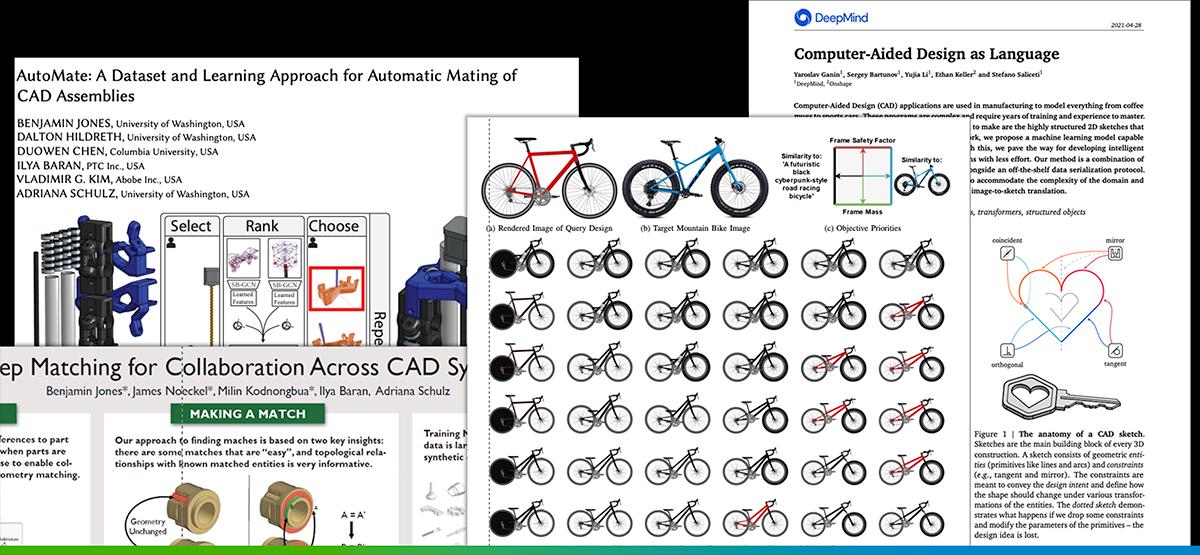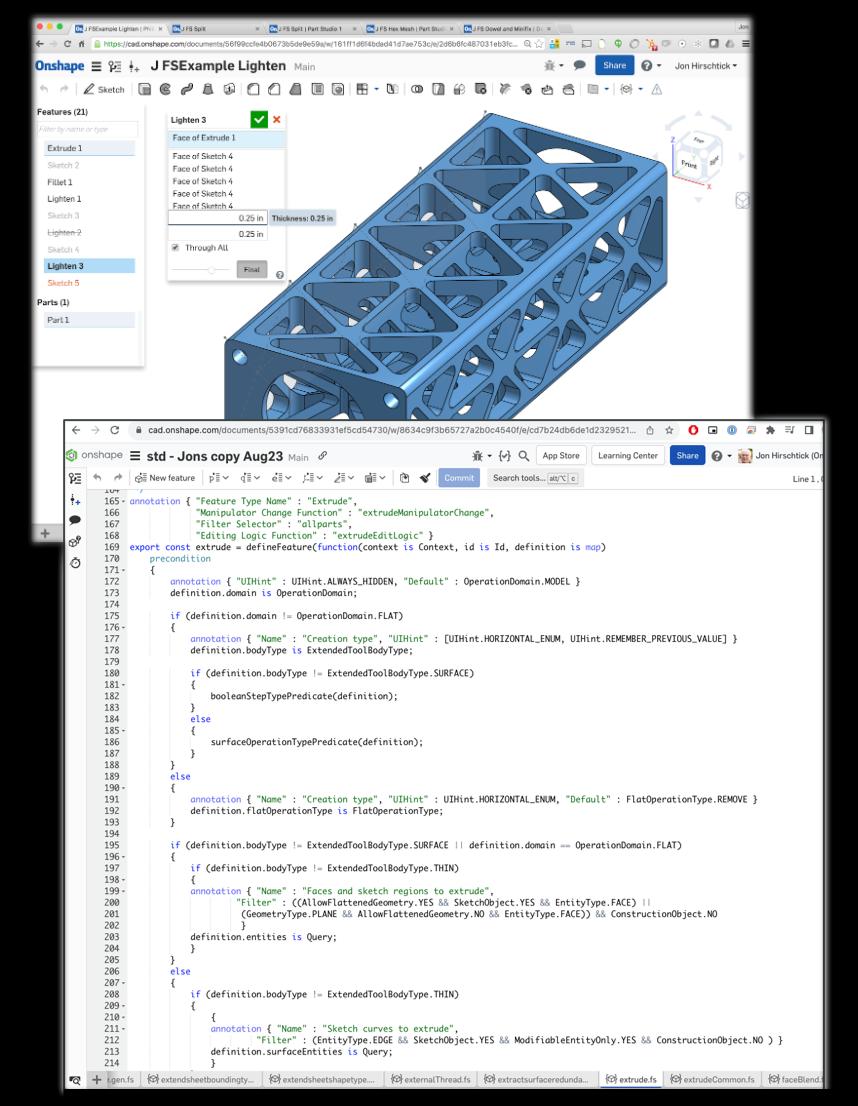
4:36
When it comes to AI’s impact on product development, we’re just getting started.
That’s according to PTC’s Onshape Chief Evangelist Jon Hirschtick, the keynote speaker at the 18th International Design Conference, DESIGN 2024, in Croatia.
Hirschtick, who has 43 years of experience building software for product developers, including Onshape and SOLIDWORKS, spoke to hundreds of attendees at this year's event, which was sponsored by Onshape.
“Modern AI presents this enormous promise for product design,” Hirschtick said. But so far, AI adoption has been limited in the product development world.
Now, “CAM, PDM, rendering, and simulation are all fertile areas for AI thinking.”

However, more academic research is needed to get there, and more innovators need to push the boundaries.
AI in Product Development Today: An Overview
Just as MIT researcher Ivan Sutherland developed Sketchpad in 1963 – which set into motion the development of traditional CAD software – early innovators and researchers are working to build tools that fully harness the power of AI.
Hirschtick highlighted several examples of workable AI applications in product development that are available today:
- PhysicsX is creating AI-powered digital engineering tools that can accelerate physics simulation through “simulation surrogates” – AI models trained on numerical analysis that can run up to 1,000 times faster.
- Vizcom takes simple sketches as input and uses AI to generate rendered design concepts based on text prompts like “orange and black controller, Nintendo-like.”
- CloudNC provides an AI assistant for CAM software that quickly produces machining strategies and reduces time spent on CAM programming.
- AdaIQ mines product reviews and other customer feedback data to synthesize design directions tailored to consumer tastes or specific attributes like performance.
- DraftAid uses AI to automatically generate drawings from 3D CAD models.
Hirschtick noted that generative-language models like ChatGPT are currently the most widely used AI applications for answering questions, summarizing information, and providing general assistance.
While discussing these early forays, Hirschtick emphasized that much more powerful AI-integrated product development solutions are on the horizon driven by cutting-edge research like:
- Work from the University of Washington, MIT, and Harvard University on using large language models to generate 3D models, optimize designs, and source components based on text prompts.
- Projects like Tanso3D explore using text prompts to directly generate simple 3D geometry.
- Teams at the University of Washington and Columbia are researching methods to automatically assemble a model from a bucket of parts.
- MIT’s DeCoDe lab is working on multi-objective optimization, combining traditional FEA loads with aesthetics based on text and image inputs.
Hirschtick made it clear that researchers around the world are just beginning to unlock AI’s potential for transforming product development workflows. Converting compelling research into robust, production-worthy solutions will require considerable effort.

He said there is an endless range of areas ripe for AI’s impact, including anomaly detection to catch unusual design patterns, enforcing company standards and requirements, and intelligent geometric search.
“Even though we've been building [tech tools] for decades, there's so much more we can do,” he said. “This was true years ago, and it’s even more true today as we are on the edge of the beginning of this exciting world of AI applied to product development.”
Onshape: A CAD that Can Keep Up with AI
As researchers and companies explore AI's vast potential in product development, they will need CAD tools capable of harnessing these technologies. According to Hirschtick, Onshape is well-positioned to support AI integration and enable future AI-driven workflows.
"Onshape is already being used widely in research,” Hirschtick stated. Several universities and AI projects reference Onshape in their work, leveraging the platform's unique cloud-native architecture and APIs.
One key advantage of Onshape is its free Education plan, which provides easy access to the full product design platform without requiring installation or downloads.
“We run on any computer – Windows, Mac, Linux – and even tablets and smartphones," Hirschtick said. This unmatched accessibility makes Onshape an ideal research tool.
Additionally, Onshape’s unique FeatureScript language allows users to create their own custom CAD features. “This is incredibly powerful for certain types of AI projects,” Hirschtick said.

As AI revolutionizes product development, having a cloud-native CAD system designed for agility, mixed geometry representations, and open access will be crucial.
Where Can AI Take Product Development?
Looking ahead, Hirschtick predicted AI augmentation will allow every engineer to have “Iron Man”-like design capabilities. He sees AI becoming so ubiquitous in the years ahead that it will be as commonplace as internet search is today.
“I believe AI will augment human engineers, not replace them,” Hirschtick told the audience. “The applications won't just be ‘computer, design this product’ but providing assistance across areas like simulation, CAM, drawings, and more.”
Throughout his talk, Hirschtick emphasized the critical role academic research will play in driving the AI revolution in product development in the coming years. He encouraged attendees to deeply consider issues like geometry representations, training data bias, and deployment realities as they push the boundaries of AI.
As engineers across the industry begin to contemplate the future of AI in design, educators are adopting Onshape, a prime example of the possibilities of design thinking. Other CAD software may become obsolete as the current need for increased flexibility grows, but Onshape is making sure that educators and researchers can adapt to the needs of students entering a shifting workforce.
By staying abreast of cutting-edge research, embracing cloud-native systems, and fostering interoperability between traditional and AI-driven modeling approaches, tool builders can pave the way for a new era of intelligent, automated, and optimized product development.
The Onshape Discovery Program
Learn how qualified CAD professionals can get Onshape Professional for up to 6 months – at no cost!
Latest Content

- Case Study
- Automotive & Transportation
Zero Crashes, Limitless Collaboration, One Connected Workflow With Cloud-Native Onshape
12.04.2025 learn more
- Blog
- Aviation, Aerospace & Defense
- Branching & Merging
- Custom Features
- Learning Center
- Onshape Government
Why Aerospace & Defense Teams Choose Onshape for Product Development
12.18.2025 learn more
- Blog
- Evaluating Onshape
Cloud-Native CAD 2025 Wins: Revenue Growth, Real-Time Collaboration, Unified CAD-CAM
12.17.2025 learn more
- Blog
- Becoming an Expert
- Assemblies
- Simulation
Mastering Kinematics: A Deeper Dive into Onshape Assemblies, Mates, and Simulation
12.11.2025 learn more


